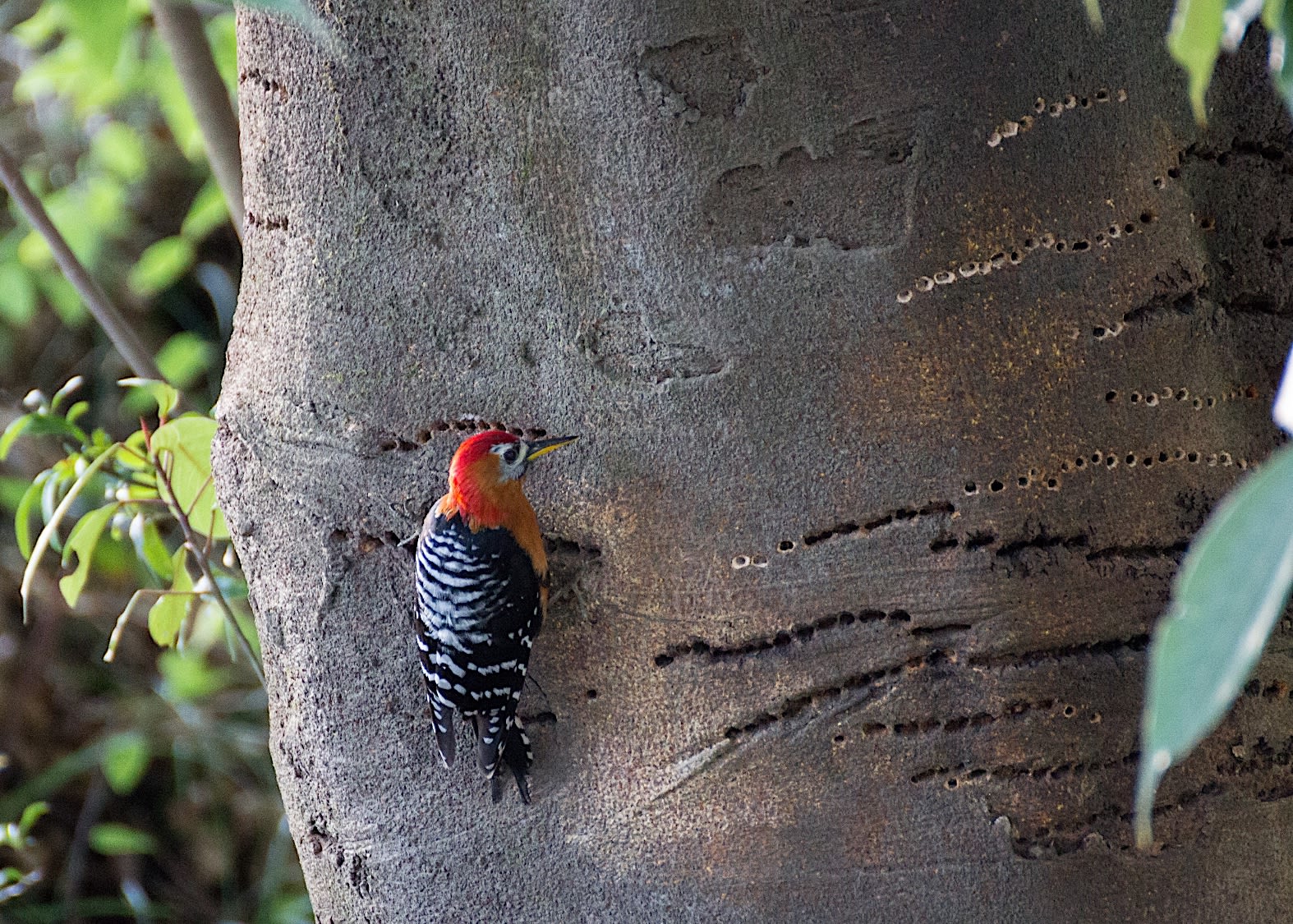One morning I was walking through the dense oak forests of Kumaon, Uttarakhand when I suddenly heard a shrill, raucous call coming from behind me. I turned around immediately to see a flash of bright red. I lifted my binoculars slowly, so as not to startle the bird. As it came into focus, I noticed a crimson crown, a pair of black-and-white wings and a white face. The bird I was looking at was a male rufous-bellied woodpecker (Dendrocopos hyperythrus). As I stood there, observing it for a little longer, I noticed it drilling into a tree that already had numerous small holes. I had been observing this tree for over a year and had noticed a pair of rufous-bellied woodpeckers frequenting it almost every time I visited. Sometimes they would drill new holes, and sometimes they would stick their long tongues, each with a brushy tip, into existing holes, to feed on tree sap. This affinity of rufous-bellied woodpeckers towards tree sap gives them the often-used nickname “sapsucker”. They are the only sap sucking woodpeckers found in Asia, while others are found in North America.
Research has shown that sapsuckers are generally keystone species, meaning they have a high impact on their ecosystem, relative to their numbers. In this case, the sap holes they create are an important source of food for some mammals and many other birds, like sunbirds and warblers, who I have seen probing these wells. Additionally, sapsuckers have also been shown to build more nest cavities than other woodpeckers, hence increasing the number of nesting holes available for secondary cavity-nesters like nuthatches and tits.

A male rufous-bellied woodpecker diligently drills sap wells in a typical straight line formation. Photo: Tarun Menon Rufous-bellied woodpeckers have narrow, pointed bills that are coloured grey and yellow. Males are easily recognised because of their red crown. Cover photo: Dhritiman Mukherjee
While most trees that the rufous-bellied woodpecker consistently visits have a number of small sap holes, my field assistant and I once came across a tree belonging to the species Toona ciliata that was riddled with holes all the way from the base of the trunk to the tips of every single branch. I am not exaggerating when I say that there was not an inch left on the tree undrilled. We decided to wait near the tree for the bird to show up and were not disappointed. Within 10 minutes there were three rufous-bellied woodpeckers all on different parts of the tree feeding on the existing sap wells. With this much damage to the tree’s bark we assumed it was probably on its last legs and wouldn’t survive much longer, but we were mistaken. At that time (late winter) it was completely bare, with no leaves whatsoever, which concurred with our assumption. But a month later, when spring had finally arrived, we were pleasantly surprised to see the tree in full bloom with both leaves and flowers.
The rufous-bellied woodpecker is found across the Himalayas into Southeast Asia, Vietnam, eastern China, and all the way into Korea. I work with an organisation called CEDAR (Centre for Ecology Development and Research) studying bird communities and the effects land use change has on them. The research we do is in the Western Himalayas where this bird lives in a narrow elevation range (1,500-2,700 m) and is generally found in temperate broadleaved forests dominated by a couple of oak species. Our research suggests that the rufous-bellied woodpecker is a habitat specialist, which means that it is quite picky about its habitat, and prefers undisturbed oak forests. It is unable to survive in degraded oak forests, pine forests, or fruit orchards.
For this very reason, the rufous-bellied woodpecker can be considered an indicator species; being conspicuously coloured and moderately common, its presence or absence can be indicative of forest health. In the last few decades, these very oak forests have been coming under increased stress from overexploitation of resources, climate change, tourism activities, road building, fire, and pine invasion, thus putting the species’ habitat under threat. Despite its declining population, the rufous-bellied woodpecker is classified as “Least Concern” by the IUCN. Given its possible keystone role, habitat specialisation, and the threat to its habitat, this species deserves much more concern.
